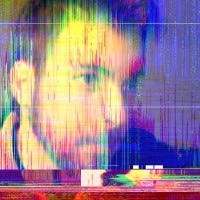How a team of developers went on to breath new life into an unsung stealth jewel on the rough 5 years after the project start.

This is Part 1 of a series about the production of Qasir al-Wasat, an occult stealth action game that began development in 2010 with a team of six Brazilian indies. In this and the next articles you will explore the many steps and winding paths we took to create this game, and also to bring it back for polishing after a long hiatus so we could effectively ship it.
Today we’ll start from the very beginning: going from the establishment of our team and development of various experiments to the conception of Qasir and the International Edition. So follow us closely, as we guide you through this crossing in the sands of time.

Dawn of the first day
Let’s go back to 2007. Independent games where just starting to get traction then, and the discussion over whether games where an artistic medium was in everyone's mouths. In this year, six college students with no previous experience in the game industry got together with the purpose of developing video games. Those where us.
We went on to create Aduge Studio, a small Brazilian development team with big dreams of pushing the boundaries of game’s expression. We would look up to games like Flow, Audiosurf, Facade, Aquaria and Braid (most of which were still being developed at the time). As every young team, we were quite naive back then, believing we could summon a game into existence through sheer tenacity.
To add insult to injury, in those days there really weren't many Brazilian game companies we could look up to, indie or otherwise, so you can guess it took us a long time to understand how real game development worked. We would eventually figure out the odds and ends of the craft, as we recognized our personal strengths and abilities.

The team back in 2009:
Anderson Vermonde, a creative and enthusiastic engineer. The lead programmer.
Mauricio Perin, illustrator and history enthusiast (to put it mildly). The graphic artist.
Bruno Bulhões, with an encyclopedic knowledge of games. The creative director, game designer and programmer.
Ingrid Skåre, who has been writing weird stories since high school and hasn't lost the habit. The narrative director.
Marcel Pace, a drummer with a love for audio experiments. The sound designer.
Thiago "Beto" Alves, enticed by extravagantly difficult challenges. The game and level designer.
A road filled with experimentations
We began our wanderings by developing several small games, two of which are particularly interesting for Qasir’s story. First came Semblante, a simple platformer with shadow and light mechanics that also tried its hand at Jungian concepts. Semblante’s protagonist is a faceless being in a journey to meet his Shadows. These are parasitic creatures that can suck the protagonist’s life force, and are only repealed by light. Though the journey can be completed by avoiding them, the game’s real ending only happens if the player chooses to join her Shadows.
Semblante made it clear that we as creators were interested in approaching challenging concepts, ones that could be really tough to translate into game systems but would bring a deeper message to the piece.

The next project brought to our method a great deal of care for the overall consistency. This was the Tsar Project, a speculative pre-production that could have been our first large scale game. Tsar is also Qasir’s spiritual predecessor, as both concern the same universe and protagonist, just in a different time and geographic frame. Instead of Qasir's 12th century Syria, Tsar was set in 16th century Russia, inside of the Moscow Kremlin.
Tsar Project would eventually be deemed too complex for our abilities at the time, and instead of toning down quality we decided to change scope; not to rescale Tsar itself, but to create a new game with the same theme and lore that we could deliver with proper polish and care. This was the beginning of Qasir.

The creative evolution of Qasir al-Wasat
It all starts with the concept of an invisible protagonist and extends through all the implications this brings. This protagonist, who we'll call Subtle here to avoid spoilers, would eventually be defined as a spirit from another plane. A Goetian Spirit from the Canaanite occultism, It visits the human world in order to observe and explore. The invisibility brought in a lot of interesting dynamics, and became the core of the game's vision. It also oriented every other aspect of the development, which we will explore in detail in future newsletters.
As these elements were transferred from the Tsar Project to Qasir al-Wasat, the game drew from the Arabian Nights tales and the team took a long time developing the right atmosphere and studying historical references. Qasir started to develop its own identity, and the tales of Subtle’s journeys between worlds gained a new dimension.
From here on the game had an horizontal development, as we built up the fortress and level designs, most of which had to be rebuilt at least once (we weren’t afraid of scraping things down and starting again until it worked.)
Eventually, Qasir’s main merit would be its consonance. All its elements contribute to the vision and general concept of the game, each one in its own way. This was only possible due to the constant communication inside the team. Design decisions informed audio decisions, visual ideas influenced code ideas, the closeness of the team and frequent interaction of different expertises made the whole much more cohesive.

Praise, Greenlight and a new start!
Scaling down Tsar's Project in order to create Qasir proved to be a really wise decision, since during the game's development history we’ve had a great deal of positive responses. Before the present International Edition was even conceived the game was selected as a finalist for several festivals, including IndieCade and the Brazilian Indie Games Festival.
When the game was greenlit on Steam, part of the original team set up to create the International Edition. And here we must take the time to thank all of the wonderful people who supported us. It's because of your backing that we decided to, with this new edition, make Qasir be everything our young hearts believed it could be. We've taken that award winning concept and put another level of polish and finesse to it.
We would also like to thank the amazing work of our translators: Nicolas Fourcroy, Vojtěch Skovajsa, Maria Vitória Miro, Marcel Weyers, Michał Zielinski, Mateusz Trebliński, Żaneta Kasperczyk, Piotr Królewicz, Francesco Riccobono, Fiammetta Marsella and Marco Tassani.
Coming up, a story about a story
In the next articles we will get into detail with each of the departments of development., including the narrative development, the visuals, gameplay and more.
If you want to know more about the game (or just say hello!), check our twitter, facebook page and specially the tumblr blog, where we are posting more frequently about Qasir’s development.
See you soon!
Read more about:
BlogsAbout the Author(s)
You May Also Like







